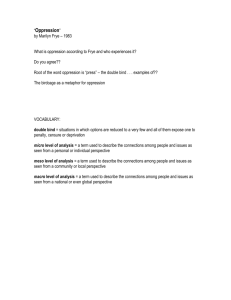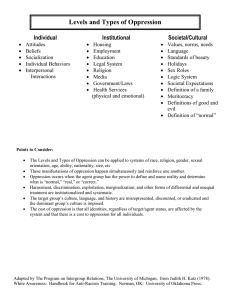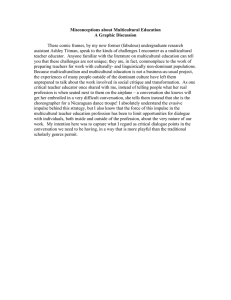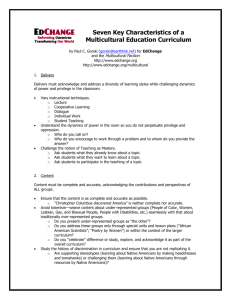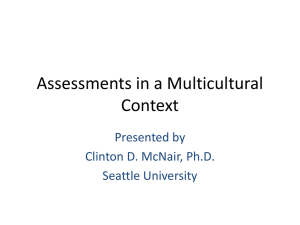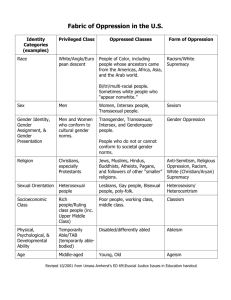Creating Space for Multicultural Voices in Collaborative Work
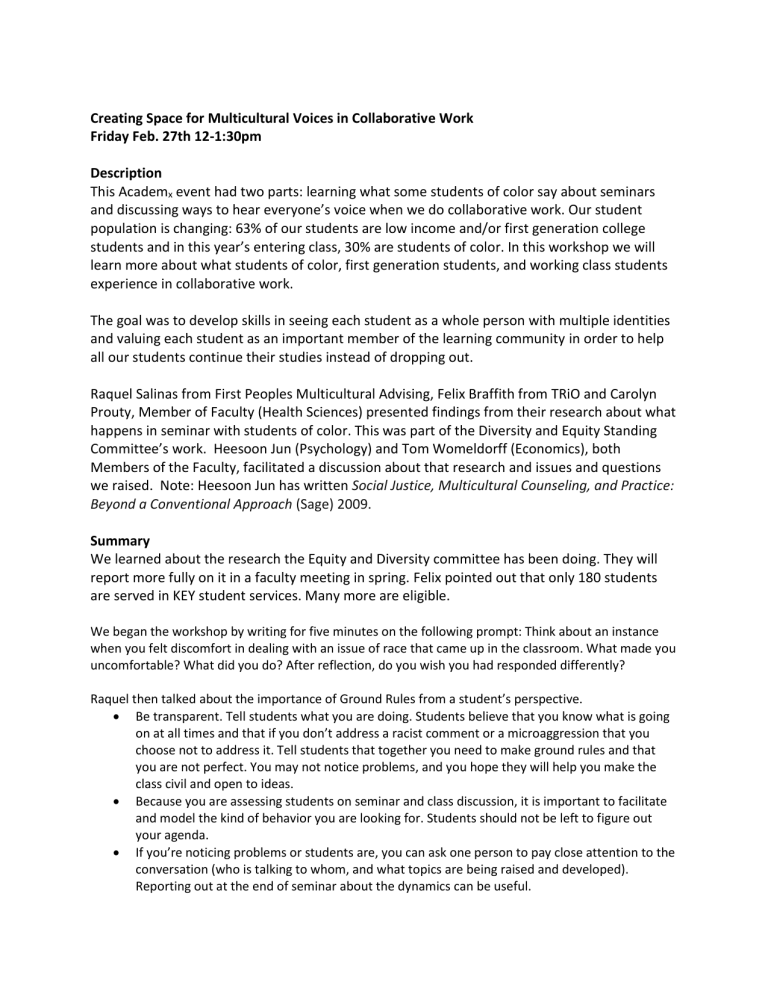
Creating Space for Multicultural Voices in Collaborative Work
Friday Feb. 27th 12-1:30pm
Description
This Academ x
event had two parts: learning what some students of color say about seminars and discussing ways to hear everyone’s voice when we do collaborative work. Our student population is changing: 63% of our students are low income and/or first generation college students and in this year’s entering class, 30% are students of color. In this workshop we will learn more about what students of color, first generation students, and working class students experience in collaborative work.
The goal was to develop skills in seeing each student as a whole person with multiple identities and valuing each student as an important member of the learning community in order to help all our students continue their studies instead of dropping out.
Raquel Salinas from First Peoples Multicultural Advising, Felix Braffith from TRiO and Carolyn
Prouty, Member of Faculty (Health Sciences) presented findings from their research about what happens in seminar with students of color. This was part of the Diversity and Equity Standing
Committee’s work. Heesoon Jun (Psychology) and Tom Womeldorff (Economics), both
Members of the Faculty, facilitated a discussion about that research and issues and questions we raised. Note: Heesoon Jun has written Social Justice, Multicultural Counseling, and Practice:
Beyond a Conventional Approach (Sage) 2009.
Summary
We learned about the research the Equity and Diversity committee has been doing. They will report more fully on it in a faculty meeting in spring. Felix pointed out that only 180 students are served in KEY student services. Many more are eligible.
We began the workshop by writing for five minutes on the following prompt: Think about an instance when you felt discomfort in dealing with an issue of race that came up in the classroom. What made you uncomfortable? What did you do? After reflection, do you wish you had responded differently?
Raquel then talked about the importance of Ground Rules from a student’s perspective.
Be transparent. Tell students what you are doing. Students believe that you know what is going on at all times and that if you don’t address a racist comment or a microaggression that you choose not to address it. Tell students that together you need to make ground rules and that you are not perfect. You may not notice problems, and you hope they will help you make the class civil and open to ideas.
Because you are assessing students on seminar and class discussion, it is important to facilitate and model the kind of behavior you are looking for. Students should not be left to figure out your agenda.
If you’re noticing problems or students are, you can ask one person to pay close attention to the conversation (who is talking to whom, and what topics are being raised and developed).
Reporting out at the end of seminar about the dynamics can be useful.
In general, most students are not equipped to talk about race and oppression. That is why sometimes when we try to address these topics, some students will speak of not experiencing these things, and the discussion can then begin revolve around them. It is important to notice this and ask these students to listen as the conversation moves to analyzing these issues
(instead of taking up all the time by protesting that they do not exist ).
If you allow students to talk who have no experience with race and oppression, sexism, or homophobia, tell your class what you are doing; otherwise, students who have background in these areas may think you are complicit in deflecting deep reflection on these topics.
Next we discussed quotes from conversations the committee had with some students of color in order to discuss strategies we might use to make students feel that their voices are important and need to be heard. Here are some reflections from that process:
Students come to Evergreen because it is progressive. They expect that faculty members are trained in dealing with oppression of all sorts and it will be apparent in our teaching. Sadly, this is not the case for all faculty members. We are also not trained to be a mentor or to give students some counseling. We need to address this lack of training.
Faculty can learn to intervene and name what is going on. However, dealing with emergent situations is not easy. It can be hard to process what is going on. It is fine to go back to that situation one or even two weeks later. You can describe your perspective and invite comment. It may be useful to revise a ground rule.
Some faculty members may feel it is not possible to do the kind of work described here. Or, they feel students are not college ready. We can reframe the conversation about students who are not college ready. To do so, consider that you are responsible for 25 relationships, not 50 or 100 or 200 as other faculty in large university classes are. Thinking in terms of relationships can make mentoring seem less daunting.
Another reframing: instead of talking about how students are not prepared for us, ask whether we’re prepared for them.
Tom suggested we consider making analogies to our subject matter to as a way of linking the important practice of studying race and oppression, privilege, gender issues, and heterosexual hegemony as a fundamental part of what we do.
Heesoon suggested we always keep in mind that each student has multiple identities. We need to confront our personal biases and work with the whole student.
Further reading suggested after our workshop
Gutiérrez Y Muhs, Gabriella; Niemann, Yolanda Flores; Gonzàles, Carmen G; and Harris, Angela
P. (Eds) Presumed Incompetent: The Intersections of Race and Class for Women in Academia, Utah
State University Press, 2012.
Schreiner, Laurie A. 2014. “Different Pathways to Thriving Among Students of Color: An Untapped
Opportunity for Success.” About Campus: Enriching the Student Learning Experience 19, no. 5: 10-19.
